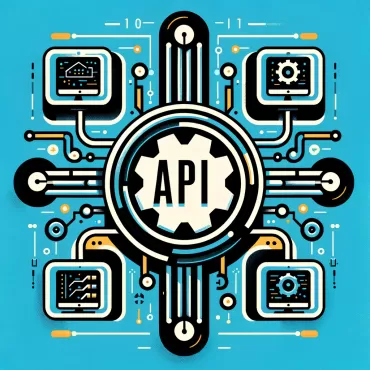Monetization through APIs has become a strategic imperative for businesses in today’s digital age. APIs not only serve as a gateway to innovation but also offer immense potential for generating revenue. To tap into the profitability of APIs, businesses must focus on creating open and free APIs that provide value, support, and a seamless developer experience. In this blog post, we explore the key considerations and strategies for leveraging APIs to drive business growth and monetization.
Strategies for API Design and Deployment
Crafting Valuable and Robust APIs
The key to a successful API lies in its value and robustness. A great API should provide a valuable service, have a clear purpose that aligns with a well-planned business model, be easy to adopt and manage, come with excellent support, and offer a superior developer experience. By focusing on these aspects, businesses can ensure that their APIs attract users and contribute to their growth, as seen in the success stories of companies like Twitter, Google, and Facebook.
Best Practices for API Security and Accessibility
When considering API security and accessibility, prioritizing secure access and authentication is crucial. Utilizing an API management solution can help ensure that sensitive data is protected and that only authorized users have access to the API. Additionally, businesses should consider offering different levels of API access based on customer plans, as seen with companies like Salesforce, to enhance customer value and drive revenue without directly charging for API usage.
It is necessary for businesses to implement robust security measures to safeguard their APIs and ensure they are easily accessible to users. By following best practices in API security and accessibility, businesses can build trust with their customers, protect sensitive data, and create a seamless experience for developers utilizing their APIs.

Monetization Models for APIs
Direct Monetization Strategies
One common strategy for API monetization is through direct charging for API access. However, there are various other direct monetization strategies, such as tiered pricing, pay-as-you-go models, and revenue sharing agreements with developers who utilize your API.
Indirect Revenue Streams Through API Utilization
With the rise of the API economy, there are multiple indirect revenue streams that businesses can tap into through API utilization. These include leveraging APIs for data analytics, advertising opportunities, developer advocacy, and user multiplication, leading to increased customer lifetime value and business growth.
This approach allows businesses to benefit from the increased flow of user-generated content or by offering API access as a value-add to existing customers. Popular companies like eBay and Yelp have successfully implemented this model, demonstrating the potential for API monetization beyond direct charging.
Building and Nurturing an API Developer Community
Despite the increasing popularity of APIs, building and nurturing an API developer community is crucial for success in the API economy. For more insights on how developers are making money from APIs, check out 6 Incredible Ways Developers are making money from API.
Enhancing Developer Experience
On the journey to monetizing your APIs, enhancing developer experience is key. Providing a valuable service, having a well-planned business model, offering simple adoption processes, great support, and an excellent developer experience will attract more developers to utilize your APIs.
Community Engagement and Advocacy
Nurturing a thriving community around your API is important. By engaging with developers, offering support, hosting events, and fostering collaboration, you can create a loyal developer community that not only promotes your APIs but also contributes to their improvement and success.
This engagement can lead to increased API usage, valuable feedback, and even potential partnerships or collaborations that can further enhance your API offerings and generate more revenue opportunities.
Analyzing and Optimizing API Performance
Tools for Monitoring API Usage
For effective management and optimization of your API performance, utilizing tools for monitoring API usage is imperative. By tracking metrics such as API response times, error rates, and usage patterns, you can identify and address any performance bottlenecks or issues proactively. Popular tools like Google Analytics, API Umbrella, and New Relic can provide valuable insights into how your API is being utilized and help you improve its overall performance.
Leveraging Analytics for Business Insights
On top of monitoring API usage, levering analytics can provide valuable business insights that can drive strategic decisions. By analyzing data from API usage, you can uncover trends, patterns, and user behaviors that can inform product development, marketing strategies, and customer engagement efforts. This data-driven approach can help you optimize your API to meet the evolving needs of your customers and maximize its profitability.
Monitoring API usage metrics can also help in identifying potential revenue streams or opportunities for expansion. By analyzing user activity, companies can tailor their offerings, pricing models, or target markets to increase profitability and business growth.
Summing up
With this in mind, creating APIs for profit requires careful consideration of various factors such as the value provided, business model alignment, ease of adoption, support, and developer experience. While offering a free and open API can lead to indirect profits through big data insights, advertising, developer advocacy, and user multiplication, it is necessary to ensure secure access and authentication. API monetization strategies can vary, from attracting more user-generated content to offering exclusive access to certain customer segments. Ultimately, success in the API economy hinges on understanding your business goals and choosing the right monetization approach that aligns with your overall strategy.




1 Comment
토토 꽁머니
Somebody essentially lend a hand to make significantly articles Id state That is the very first time I frequented your website page and up to now I surprised with the research you made to make this actual submit amazing Wonderful task